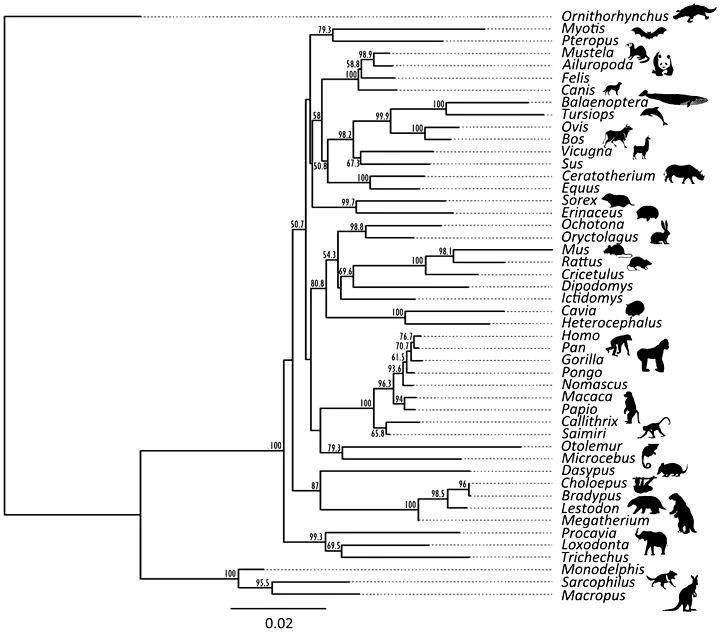Collagen sequence analysis of the extinct giant ground sloths Lestodon and Megatherium

Abstract
For over 200 years, fossils of bizarre extinct creatures have been described from the Americas that have ranged from giant ground sloths to the ‘native’ South American ungulates, groups of mammals that evolved in relative isolation on South America. Ground sloths belong to the South American xenarthrans, a group with modern although morphologically and ecologically very different representatives (anteaters, armadillos and sloths), which has been proposed to be one of the four main eutherian clades. Recently, proteomics analyses of bone collagen have recently been used to yield a molecular phylogeny for a range of mammals including the unusual ‘Malagasy aardvark’ shown to be most closely related to the afrotherian tenrecs, and the south American ungulates supporting their morphological association with condylarths. However, proteomics results generate partial sequence information that could impact upon the phylogenetic placement that has not been appropriately tested. For comparison, this paper examines the phylogenetic potential of proteomics-based sequencing through the analysis of collagen extracted from two extinct giant ground sloths, Lestodon and Megatherium. The ground sloths were placed as sister taxa to extant sloths, but with a closer relationship between Lestodon and the extant sloths than the basal Megatherium. These results highlight that proteomics methods could yield plausible phylogenies that share similarities with other methods, but have the potential to be more useful in fossils beyond the limits of ancient DNA survival.